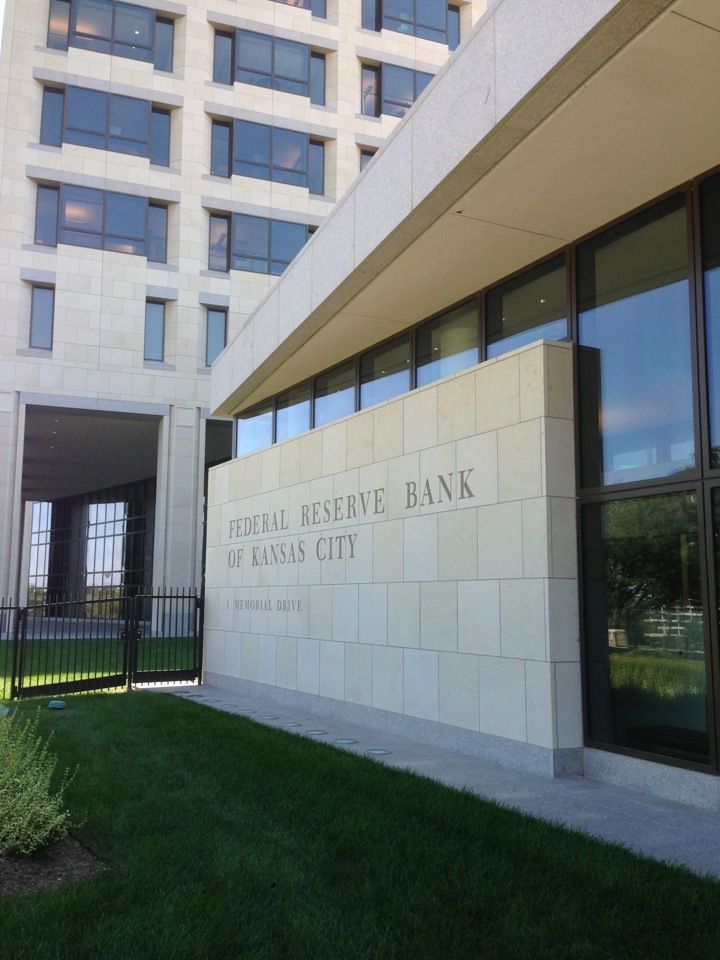Fed Beige Book: CRE Activity Stayed at a Low Level
Overall Economic Activity
Economic activity increased in almost all Districts, but remained well below where it was prior to the COVID-19 pandemic. Consumer spending picked up as many nonessential businesses were allowed to reopen. Retail sales rose in all Districts, led by a rebound in vehicle sales and sustained growth in the food and beverage and home improvement sectors. Leisure and hospitality spending improved, but was far below year-ago levels. Most Districts reported that manufacturing activity moved up, but from a very low level. Demand for professional and business services increased in most Districts, but was still weak. Transportation activity rose overall on higher truck and air cargo volumes. Construction remained subdued, but picked up in some Districts. Home sales increased moderately, but commercial real estate activity stayed at a low level. Financial conditions in the agriculture sector continued to be poor, while energy sector activity fell further because of limited demand and oversupply. Loan demand was flat outside of some Paycheck Protection Program (PPP) activity and increased residential mortgages. The PPP and loan deferrals by private lenders reportedly provided many firms with sufficient liquidity for the near term. Outlooks remained highly uncertain, as contacts grappled with how long the COVID-19 pandemic would continue and the magnitude of its economic implications.

Federal Reserve Bank of Kansas City
Summary of Economic Activity
After a sharp contraction in previous months, Tenth District economic activity rebounded slightly in June. Expectations also improved, and contacts in most sectors anticipated higher levels of activity in the months ahead. Consumer spending increased modestly, with stronger retail, restaurant, auto, and tourism sales. Manufacturing activity expanded slightly, driven by gains at non-durable goods plants. Sales also picked up in the transportation and wholesale trade sectors, although transportation activity remained well below year-ago levels. Professional and high-tech services contacts continued to report lower sales, and additional declines were anticipated in the months ahead. Residential real estate activity increased moderately as home sales, prices and construction activity rose. However, commercial real estate activity dropped further. Energy activity also continued to decline, and contacts expected oil prices to remain below the price needed to substantially increase drilling for more than a year. The agriculture sector remained weak, but all meat-packing plants were operational by late June. District employment started to recover, with the most significant gains in the retail, restaurant and tourism sectors. Despite recent improvement, employment still remained well below year-ago levels in several sectors. Wages rose modestly, and prices increased across most District sectors.
Employment and Wages
District employment started to recover in June after declining in the previous two survey periods. The most significant gains occurred in the retail, restaurant, and tourism sectors, with retail employment approaching year-ago levels. However, several industries reported employment levels that were still sharply below a year ago including transportation, tourism, restaurants and durable-goods manufacturing. Overall, employment was anticipated to increase slightly in the months ahead, but expectations were varied across industries.
Labor shortages were not an issue for the majority of respondents, but some contacts reported shortages for truck drivers, skilled technicians, and restaurant workers. Wages rose slightly, and modest gains were expected in the coming months.
Prices
Input and selling prices rose in June, and modest price increases were expected in both the services and manufacturing sectors in the months ahead. Retail contacts noted moderate growth in both input and selling prices and expected additional increases going forward. Both input and selling prices rose sharply in the restaurant sector and similar price growth was anticipated in the next few months. Construction supply respondents noted a modest rise in selling prices. Selling prices continued to decline in the transportation industry, but input prices rose moderately. Raw materials prices edged up in the manufacturing sector, while the prices of finished products rose slightly.
Consumer Spending
Consumer spending picked up modestly since the last survey period after plummeting in previous months. Sales increased for auto, restaurants, tourism, and retailers as many businesses reopened to consumers. Despite improved auto, restaurant and tourism sales, activity remained well below year-ago levels. However, retail activity was up from a year ago, driven by higher sales at grocery stores and building and garden supplies retailers. Health services sales continued to contract, but at a slower rate compared with previous months. A majority of firms reported receiving loans from the SBA PPP program, and most contacts indicated that these loans helped prevent layoffs and cover costs related to the pandemic. Expectations for all consumer spending sectors rose considerably after historically low expectations a few months ago.
Manufacturing and Other Business Activity
Manufacturing activity expanded slightly in June after steep decreases for three straight months. The increase in activity was driven by an uptick at non-durable goods factories, including sharply higher production at food and beverage manufacturing plants. Activity at durable goods factories, especially for primary and fabricated metals, continued to decline, but at a slower pace than in previous months. Production and new orders increased slightly but remained well below year-ago levels. Over 75 percent of factory contacts reported applying for the SBA PPP program, and most indicated that those loans prevented some layoffs and furloughs. Expectations for future activity increased, though capital expenditures plans and expectations for new orders for export remained subdued.
Outside of manufacturing, sales increased in the transportation and wholesale trade sectors. Wholesale trade sales were near year-ago levels, but transportation sales remained significantly below year-ago levels. Sales dipped further at professional and high-tech services firms, and were below levels a year ago. Contacts in the transportation and professional and high-tech services sectors anticipated fewer sales and capital expenditures in the months ahead. By contrast, expectations among wholesale trade contracts rebounded, with contacts expecting significantly higher sales moving forward.
Real Estate and Construction
Residential real estate activity expanded moderately in June, while commercial real estate activity declined modestly. Residential sales increased moderately as stay-at-home orders were lifted, and contacts were optimistic about strong sales in the months to come. Inventories fell further, and were sharply below year-ago levels. Home prices increased moderately and were expected to increase further as sales strengthen and inventories remain low. Residential construction activity rose modestly and construction supply firms noted a slight increase in sales, with one contact noting a surge in sales for deck supplies. Commercial real estate conditions deteriorated further as vacancy rates increased significantly, while absorption, sales, and prices declined. Many contacts noted that access to credit had become more difficult in recent months, and one respondent reported that retail leasing was particularly challenging.
Banking
Banking contacts reported a slight decrease in overall loan demand in recent weeks including a slight decrease in consumer loan demand, a modest decrease in commercial real estate loan demand, and a moderate decrease in commercial and industrial loan demand. However, the demand for residential real estate loans increased sharply since the last survey. Bankers reported that credit standards tightened across all loan categories. Loan quality decreased slightly compared to a year ago, but a sharp deterioration was expected over the next six months. Deposit levels rose at a strong pace, with deposits from stimulus checks and the SBA PPP program playing a large role.
Energy
District energy activity collapsed further in June, with sharp drops in revenues, profits and employment. The number of active oil and gas rigs in the District also continued to decline as firms shut-in additional wells to ease production levels. The oversupply of oil combined with weaker demand due to the global pandemic continued to curb regional oil production and well-head prices. Contacts expected oil and gas prices to rise modestly in the months ahead, but prices were expected to remain below the level needed for a substantial increase in drilling for more than a year. Additional deterioration was anticipated in the energy sector, although the pace of declines was expected to moderate. Despite weak conditions, over two-thirds of energy contacts reported that they could survive for more than a year if current revenue levels persisted.
Agriculture
The Tenth District farm economy remained weak despite some signs of stabilization in markets for key agricultural commodities. By late June, all U.S. meat packing plants were operational, but COVID-19 continued to impede supply chain functions. Capacity utilization and meat production at packing plants increased slightly since May, but appeared to remain limited somewhat by modified operations. Alongside production constraints, demand for meat was expected to decrease in 2020 as a result of broader economic weaknesses, putting additional downward pressure on cattle and hog prices. Ethanol production rebounded slightly in June, but remained about 20 percent lower than a year ago and continued to weigh on corn prices. District contacts reported that farm borrower liquidity weakened considerably alongside lower commodity prices, but government aid programs could provide a moderate degree of support to agricultural credit conditions.
For more information about District economic conditions visit: www.KansasCityFed.org/Research/RegionalEconomy



